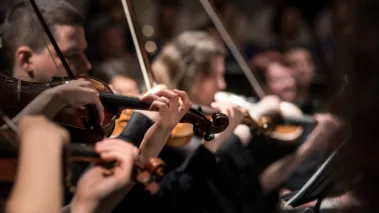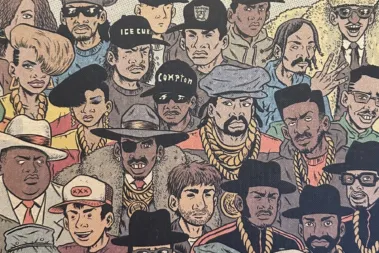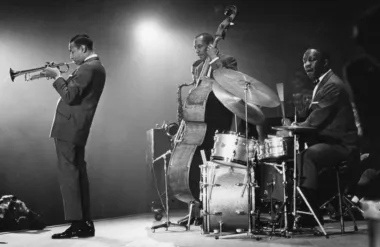
Music is a universal language that has been an integral part of human civilization throughout recorded history. This auditory art form, transcends mere entertainment, serving as a conduit for expressing human emotion and our experiences. The 7 elements of music are the foundational building blocks that give music its distinct character and emotional depth. They are used to define all music, with different music genres and styles emphasizing some elements more than others to create uniqueness. As new genres evolve and mature, they naturally create their own individual characteristics, such as the use of electric guitar in rock music, folk harmonies in country music, rap lyrics and sampling in hip hop, or improvisation in jazz. But they are all built upon the core 7 elements of music.
As we explore these elements, we embark on a journey through time and culture, uncovering how they have shaped the music we know and love today. This exploration is not just about understanding music technically but also about appreciating its profound ability to connect with us on a deeper level.
The 7 Elements of Music
Each of the 7 elements of music bring a unique flavor to a composition, and together, they create a harmonious and evocative experience. This section examines each of these elements, exploring their individual characteristics, historical significance, and their indispensable role in music creation and appreciation. Understanding the 7 elements of music is crucial for anyone who seeks a deeper appreciation of music, as they provide the framework within which the magic of melodies, harmonies, rhythms, and more, come to life.
Melody
What Does Melody Mean in Music?
Melody is the sequence of musical notes that are perceived as a single coherent line. It's the part of a song or composition that is most recognizable and often the most emotionally engaging. Melodies can be simple, consisting of a few notes, or complex, weaving through various pitches and rhythms. The character of a melody is shaped by its range, length, register, and direction, each aspect bringing a unique emotional quality to the music.
The History of Melody in Music
Historically, the concept of melody has evolved significantly. Ancient melodies were often simple and modal, as heard in Gregorian chants. The Renaissance period saw more elaborate melodic lines, with greater variation in pitch and rhythm. In the Baroque era, the use of ornamentation in melodies became popular, adding decorative flourishes to the main melodic line. The Romantic period witnessed an expansion in the emotional expressiveness of melodies, often reflecting the composer's personal feelings. In contemporary music, melodies range from the complex improvisations in jazz to the catchy, repetitive hooks in pop music.
Harmony
What Does Harmony Mean in Music?
Exploring "what does harmony mean in music" leads us to the combination of simultaneously sounded musical notes to produce chords and chord progressions. Harmony enriches a melody by adding depth, texture, and emotion. It can be consonant, offering a sense of resolution and comfort, or dissonant, creating tension and a sense of expectation.

The History of Harmony in Music
Harmony's development over the centuries has been remarkable. In the Medieval and Renaissance periods, harmony was often based on modal scales, with a focus on consonance. The Baroque era introduced more complex harmonic structures, paving the way for the emotional depth of the Classical and Romantic periods, where harmony was used to evoke a wide range of emotions. In the 20th century, harmony saw further innovation with the introduction of atonal and serial techniques in classical music, and the complex chord structures in jazz.
Rhythm
What Does Rhythm Mean in Music?
Rhythm is the pattern of durations and accents in the notes of a musical piece. So when questioning "what does rhythm mean in music," we're referring to the element that deals with time in music. It is what drives the music forward, giving it pace and a sense of movement. Rhythm is not just about the notes played but also about the silence or pauses between them, which are equally important.
The History of Rhythm in Music
The role of rhythm in music has evolved through various musical periods. In ancient music, rhythm was often tied to the natural flow of language in songs and chants. During the Baroque period, rhythm became more elaborate, with the use of syncopation and hemiolas. The Classical era focused on clarity and regularity in rhythm, while the Romantic era saw more freedom and expressiveness in rhythmic patterns. In contemporary music, rhythm has taken on diverse forms, from the complex polyrhythms in African music to the syncopated beats in jazz and the steady rhythms in rock and pop music.
Dynamics
What Does Dynamics Mean in Music?
Dynamics in music refers to the varying degrees of loudness or softness in a musical composition. Dynamics play a crucial role in conveying the emotional content of music, allowing for expressions ranging from subtle whispers to powerful crescendos. The use of dynamics adds contrast and interest to music, making it more engaging and expressive.

The History of Dynamics in Music
The use of dynamics has evolved significantly throughout musical history. In the Renaissance and Baroque periods, dynamics were often used to create contrast in music. The Classical era saw the development of more nuanced dynamic markings, allowing composers to specify exact levels of loudness and softness. The Romantic period took dynamics to new heights, using them to convey intense emotions and dramatic contrasts. In modern music, dynamics are used creatively across genres, from the controlled dynamics in classical orchestral music to the raw power in rock music and the subtle variations in electronic music.
Tone
What Does Tone Mean in Music?
Tone in music, also known as timbre or tone color, is the quality of sound that distinguishes different types of voices and instruments. It is what makes a piano sound different from a violin, even when they play the same note. Tone is shaped by various factors, including the materials and construction of the instrument, the technique of the player, and the way the sound is produced.
The History of Tone in Music
The significance of tone in music cannot be overstated. It adds color and character to music, allowing for a rich tapestry of sounds within a composition. Throughout history, the exploration of tone has led to the development of a wide range of musical instruments, each with its unique sound. The Classical era, for example, saw the refinement of orchestral instruments, leading to a greater diversity of tone colors. In contemporary music, the advent of electronic instruments and technology has further expanded the palette of tones available to musicians, enabling them to create new and innovative sounds.
Texture
What Does Texture Mean in Music?
The way different melodic, rhythmic, and harmonic elements are combined in a composition is known as "texture". It can range from monophonic (a single melody line) to polyphonic (multiple independent melody lines) and homophonic (one main melody accompanied by chords). Texture plays a key role in shaping the overall sound and feel of a piece of music.
The History of Texture in Music
The concept of texture has evolved throughout musical history. In the Medieval period, music was predominantly monophonic, with a single melody line. The Renaissance saw the emergence of polyphony, with intricate interweaving of multiple melody lines. The Baroque period further developed this complexity, while the Classical era favored a more homophonic texture, focusing on clarity and balance. The Romantic period and modern music have seen a wide variety of textures, from the lush harmonies of romantic orchestral music to the complex layering in electronic and experimental music.
Form
What Does Form Mean in Music?
The overall structure or plan of a piece, and the way its sections are organized and repeated, is what is typically considered its "form". In music, form provides a framework within which the other 7 elements of music interact and develop. Common forms include binary (AB), ternary (ABA), rondo (ABACA), and sonata form.
The History of Form in Music
The development of musical form has been a key aspect of the evolution of music. In the Medieval and Renaissance periods, forms were relatively simple and often tied to dance or religious functions. The Baroque period saw the development of more complex forms, such as the fugue and the concerto grosso. The Classical era refined these forms, with the development of the sonata form, which became a key structural element in symphonies, sonatas, and chamber music. The Romantic period expanded the scale and scope of these forms, while modern and contemporary music have experimented with new forms, challenging traditional structures and exploring new ways of organizing musical ideas.
The Elements of Rock Music

The 7 elements of music that we've outlined are universal, setting the stage for all types of music. But as new genres emerge, unique elements and characteristics surface to define the identity of that genre's sound. This distinction is crucial as it highlights how the universal language of music adapts and evolves, reflecting diverse cultural, historical, and social influences. The 7 elements of music are foundational, allowing genre-specific elements to deepen our appreciation of music, by connecting us with specific music styles that speak to our unique human expression and experience.
For example, rock music emerged from the blues and country music of the early 20th century, expanding the 7 elements of music to emphasize the beat, rhythm, and emerging technology of electric instruments. These new sounds were powerful in shaping and reflecting societal changes, particularly among the youth. Its evolution is a testament to its adaptability, reinventing itself through rebellion and self-expression, while remaining true to the core 7 elements of music. This experimentation and musical evolution beyond the traditional elements paved the way to define a new genre, centered on rhythmic drive, the iconic use of the electric guitar, and a highly significant cultural impact that would permeate through other new genres as well.
The 5 Elements of Rock Music
1. Rhythmic Drive
One of the defining features of rock music is its strong rhythmic drive. Rock rhythms are typically straightforward and accentuated, often featuring a steady beat that drives the music forward. This rhythmic foundation is essential in creating the energetic and sometimes rebellious feel of rock music.
2. Electric Instruments
The electric guitar's sound, often amplified and distorted, has become a hallmark of rock music. It provides not just melody but also a grit and aggression that has defined the genre's aesthetic. Guitar solos in rock music are particularly notable for their expressiveness and technical prowess, often becoming the centerpiece of a song.
3. Emphasis on Songwriting and Lyrics
Rock music places a strong emphasis on songwriting and lyrical content. The lyrics often reflect social and political themes, personal experiences, or emotional struggles, resonating deeply with the audience. This focus on storytelling and emotional expression through words sets rock music apart from other genres.
4. Body Language
Rock performances are distinguished by their energetic and sometimes aggressive body language, initially serving as a counter-cultural statement. As rock evolved, especially in the grunge and emo eras, the style shifted to a more laid-back and indifferent demeanor, reflecting a change in the genre's cultural stance.
5. Cultural Impact
Rock music has had a significant cultural impact since its inception. It has been associated with various social movements and has often been a voice for youth rebellion and cultural change. The genre's influence extends beyond music, impacting fashion, attitudes, and social norms.
The Elements of Hip Hop

Originating in the urban landscapes of the 1970s, Hip Hop is more than just a music style; it's a cultural phenomenon that encompasses various forms of artistic expression. Its roots are deeply embedded in the African American experience, reflecting social realities and providing a voice for the voiceless. Hip Hop's essence lies in its raw, unfiltered narrative and its innovative use of technology and sound. These elements, coupled with its rhythmic and lyrical complexity, sampling culture, and the art of DJing, form the foundation of a genre of Hip Hop that has become a global language for youth expression and cultural exchange.
The 8 Comprehensive Elements of Hip Hop
1. Rapping
Hip Hop is known for its complex rhythms and lyrical prowess. The genre often features syncopated beats and intricate rhyming patterns, making it rhythmically engaging. Lyrically, Hip Hop is a platform for storytelling, social commentary, and personal expression.
2. Beats and Rhythm
Hip-hop music is fundamentally defined by its beats and rhythm, combining traditional elements and modern technology to create its distinctive sound. This genre's evolution in beat-making mirrors advancements in music production technology, with producers continually pushing boundaries, from using drum machines like the Roland TR-808 to blending samples with live drums, significantly advancing the complexity and texture of hip-hop's sonic landscape.
3. Sampling
Sampling, or using segments of other songs and sounds, is a fundamental aspect of Hip Hop production. Artists creatively repurpose these samples, creating new contexts and meanings. The use of breaks, or instrumental portions of a song, is also crucial, providing a rhythmic backbone for rapping.
4. DJing and Turntablism
DJing and turntablism are central to Hip Hop. DJs play a pivotal role in the genre, not just in playing music but in manipulating sounds and beats to create new music. Techniques like scratching and beat juggling have become synonymous with Hip Hop.
5. Lyricism
Hip Hop places a strong emphasis on lyrics and wordplay. The genre is known for its poetic and often complex use of language, with artists using metaphors, puns, and storytelling to convey their messages. The lyrical content often reflects social issues, personal experiences, and cultural commentary.
6. Breakdancing
Dancing, especially breakdancing, is a vital aspect of hip-hop culture, originating from the genre's early days in 1970s urban America. Characterized by athletic and acrobatic moves, breakdancing serves as a physical interpretation of hip-hop's beats and rhythms, reflecting the genre's grassroots nature, competitive spirit, and communal bond.
6. Culture and Style
Hip-hop transcends music, shaping lifestyles, fashion, and global culture, offering a platform for identity and expression. Originating from urban communities, its cultural elements like graffiti, breakdancing, and DJing represent more than entertainment; they embody a distinct way of life. Hip-hop challenges societal norms and gives voice to marginalized communities, influencing everything from language to politics. As it spreads globally, hip-hop continues to evolve, enriching its cultural impact and solidifying its status as a dynamic, influential cultural movement.
7. Graffiti Art
Graffiti art emerged in 1960s and 70s urban America as both a rebellious act and a powerful form of expression. Initially labeled as vandalism, graffiti became a medium for artists to claim visibility in a cityscape that often ignored them. Characterized by bold colors and provocative messages, it evolved alongside Hip Hop, spreading worldwide as a symbol of resistance and self-expression. Today, graffiti transcends its street origins, recognized as a legitimate art form while maintaining its edge as a voice for the marginalized and a reflection of social and political commentary.
The Elements of Country Music

Country music, rooted in the folk traditions of the American South, resonates with tales of everyday life, love, and hardship. It represents the heartbeat of American storytelling, with its lyrical narratives painting vivid pictures of the human experience. The genre's charm lies in its simplicity, both in its musical structure and its earnest vocal styles. The use of traditional instruments adds to its distinct sound, embodying a sense of authenticity and connection to its roots. This deep-seated tradition of storytelling and simplicity serves as a backdrop to the defining elements of country music, from its storytelling lyrics to the themes of heartache and resilience.
The 5 Elements of Country Music
1. Confessional Lyrics
One of the hallmarks of country music is its storytelling lyrics. The genre often features narrative songs that tell stories about real-life experiences, emotions, and challenges. These stories resonate with listeners, offering a sense of connection and relatability.
2. Folk Harmonies
Country music is characterized by its simple and catchy melodies and harmonies. The straightforward musical structure makes it accessible and appealing to a broad audience. The melodies often have a sing-along quality, making them memorable and engaging.
3. String Instruments
The use of traditional string instruments is central to country music's sound. Instruments like the acoustic guitar, banjo, fiddle, and pedal steel guitar are commonly used, giving the genre its distinctive musical character.
4. Twangy Vocal Style
The vocal style in country music is often straightforward and sincere, reflecting the genre's emphasis on storytelling and emotional expression. Singers in country music are known for their clear and expressive voices, often with a distinctive twang.
5. Duets
Country music duets stand as a testament to the genre's rich tradition of harmony and storytelling, offering a unique space where narratives unfold through a blend of voices. These performances, ranging from romantic to playful, create a musical conversation that enriches the genre's storytelling depth. The chemistry between artists in duets, exemplified by iconic pairings like Johnny Cash and June Carter Cash, adds a distinct dynamic, blending tradition with modernity and showcasing the genre's evolving nature and enduring emotional appeal.
The 8 Elements of Jazz Music

Jazz was born in the African American communities of New Orleans, and is celebrated for its complexity, improvisational nature, and the unique fusion of various musical traditions and cultures. Jazz's identity is shaped by its embrace of diverse influences, creating a sound that is both sophisticated and soulful. The interaction between musicians, the use of improvisation, and the incorporation of complex harmonies and rhythms illustrate the genre's dynamic nature. This rich tapestry of innovation and interaction provides a context for understanding the myriad characteristics that give jazz music its distinctive and enduring appeal.
The 8 Elements of Jazz Music
1. Improvisation
Improvisation is at the heart of jazz music. Jazz musicians often create spontaneous and intricate solos, showcasing their technical skill and creativity. This element of improvisation makes each performance unique and dynamic.
2. Complex Harmonies
Jazz is known for its complex and often dissonant harmonies. The genre frequently employs extended chords and altered harmonies, creating a rich and sophisticated sound palette. This harmonic complexity is a defining feature of jazz.
3. Syncopation and Rhythm
Syncopation and swing rhythms are characteristic of jazz music. The use of off-beat rhythms and a swinging feel creates a sense of groove and movement, making jazz rhythmically engaging and distinct.
4. Blue Notes
Blue notes, or notes that are slightly pitched down for expressive purposes, are a hallmark of jazz. These notes add a soulful and emotional quality to the music, contributing to jazz's unique sound.
5. Polyrhythms
Polyrhythms in jazz, rooted in African musical traditions, add complexity and texture, exemplifying the genre's depth and sophistication. Originating in New Orleans, this characteristic melds African rhythmic patterns with European structures, creating a unique, rhythmically rich sound. Jazz polyrhythms, showcased by drummers like Baby Dodds and Elvin Jones, thrive in the interplay between steady rhythm sections and contrasting soloist patterns, forming a dynamic musical dialogue. Evident in styles like Afro-Cuban jazz, polyrhythms not only enhance jazz's rhythmic diversity but also engage musicians and listeners in a deeper, layered rhythmic experience.
6. Call and Response
Jazz music is characterized by a high level of interaction between musicians. The call-and-response patterns and the interplay between soloists and rhythm sections exemplify the collaborative nature of jazz.
7 ;Individuality and Expression
Jazz encompasses a wide range of styles, from traditional Dixieland to modern jazz fusion. This diversity reflects the genre's adaptability and its ability to incorporate influences from other musical traditions.
8. Instrumentation
In jazz, the diverse use of instruments is key to its distinctive sound, reflecting the genre's inclusive and evolving nature. Instruments like the saxophone, with its human-like expressions, have become iconic in jazz, pushed to new heights by legends like Charlie Parker. The piano, with its rhythmic and harmonic richness, has been vital, as demonstrated by greats such as Duke Ellington. Brass instruments like trumpets and trombones have shaped jazz's various styles, with masters like Louis Armstrong leading the way. The rhythm section, with instruments like the double bass and drums, grounds the music while allowing for intricate improvisations, showcasing the talents of artists like Charles Mingus. Jazz's openness has also embraced other instruments like clarinets, vibraphones, and guitars, each adding unique flavors to its expansive musical palette.
A Musical Journey Through the History and Echoes of Sound
The 7 elements of music are the defining characteristics of the music we love, including genres like rock, hip hop, country, and jazz. As we journey through a world of sound that is as diverse as it is unified, music becomes a reflection of the human experience, and a symphony of sound and soul that transcends time and place. From the melodic narratives to the rhythmic pulses, from the harmonious interplay to the dynamic expressions, each element and characteristic contributes to the rich tapestry of music. As we close this exploration, we are reminded of music's power to connect, to inspire, and to transform. It is a language that speaks to the heart, a universal melody that echoes through the ages, resonating with each of us in unique and profound ways.







Leave a Reply!